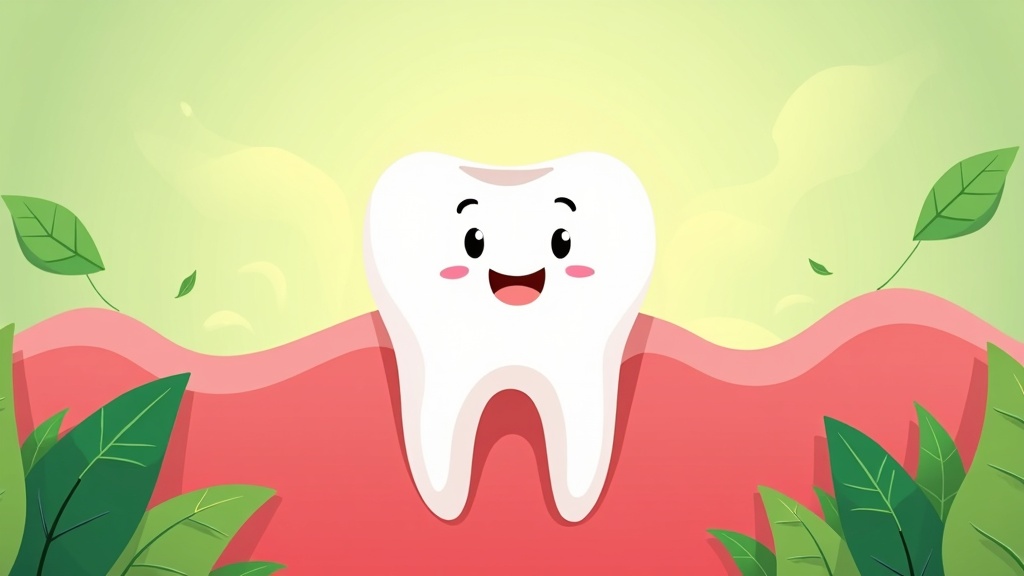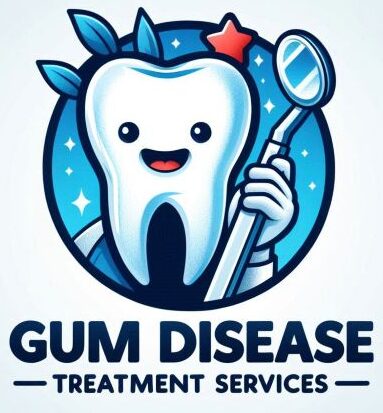Gum disease isn’t something that only happens to adults. Kids can develop it too, sometimes without anyone realizing until it’s pretty advanced. Spotting the early signs of gum disease in children gives you the best chance to clear it up before it turns into something difficult to handle. I’ll guide you through what to look for, why it matters, and how to give your kid’s gums a fighting chance against gum disease.

Why Gum Health Matters for Kids
Healthy gums keep teeth in place and help kids talk, eat, and smile confidently. Gum disease in kids, also known as pediatric gingivitis, might start off small, like a bit of redness or swelling, but it can cause more issues down the line if it progresses. It’s pretty common for kids to brush quickly or skip flossing, so their gums can end up being the first dental issue to show up.
The Centers for Disease Control and Prevention (CDC) mentions that nearly half of kids aged 6 to 11 have had cavities in their baby teeth, and early gum problems can sneak in just as easily. Most people think of gum disease as an adult issue; however, catching it early in kids makes a real difference. That’s why it’s so important to know what to keep an eye out for and step in early.
What Gum Disease Actually Is
Gum disease is basically an infection and inflammation of the gums. There are two main stages: gingivitis and periodontitis. Gingivitis is mild and reversible if you catch it early. Periodontitis is more serious and can harm the bones that support teeth. Most kids with gum disease are at that gingivitis stage, so there’s a great chance of winding it back if you spot it early.
Gum disease is caused by plaque, a sticky film of bacteria that forms on teeth and gums. If kids aren’t brushing and flossing well, that plaque turns into tartar and ramps up inflammation. Eventually, this can make the gums more sensitive and create problems that go beyond just a simple cleaning.
Common Early Signs of Gum Disease in Children
Most early gum disease symptoms in kids are pretty easy to miss, especially if daily teeth brushing is rushed or skipped. Here’s what I pay close attention to at home and what most dental pros recommend you watch for:
- Swollen or puffy gums: Healthy gums should lie flat and snug around teeth. Early gum disease can make them look puffier than usual.
- Red or darker pink color: Gums that are usually pale pink might turn bright red or even a purplish hue.
- Bleeding when brushing or flossing: Gums shouldn’t bleed, even a little. If you notice blood on the toothbrush or in the sink, that’s a top sign the gums are inflamed.
- Bad breath that won’t go away: Kids get bad breath sometimes, but if it’s consistent even after brushing, bacteria stuck under the gumline could be the culprit.
- Tenderness or discomfort: If your child mentions their mouth feels sore, especially near the gums, it’s worth a closer look.
- Gums pulling away from the teeth: This sign is more advanced, but even a small amount of recession or “longer looking” teeth isn’t normal in kids.
Quick Tips for At-Home Gum Checks
Keeping an eye on gum health can be worked into your kid’s daily routine. Here’s how I stay on top of things without turning it into a big ordeal:
- Make brushing time visible: Use a bathroom mirror and ask your child to smile wide. Look for redness, swelling, or plaques at the gumline while they brush or after they brush.
- Watch for complaints or changes: Take note if your child says flossing hurts or shows you blood on their toothbrush.
- Ask about sore spots: Kids don’t always mention discomfort, so asking directly works wonders.
- Check after flossing: Floss your child’s teeth (especially younger ones) once or twice a week and see if there’s bleeding or irritation in the same spots each time.
What Increases the Risk?
Some kids are more prone to gum trouble than others. A few factors stack the odds:
- Poor brushing and flossing habits: Not brushing twice a day or skipping floss lets plaque build up fast.
- Orthodontic appliances: Braces and retainers make cleaning tougher, creating more spots for bacteria to hide.
- Diet high in sugar or starch: Juice boxes, candy, and frequent snacks create a perfect environment for gum-harming bacteria.
- Medical conditions: Things like diabetes can make gums more sensitive to infection.
- Genetics: If family members struggled with gum disease, kids might be more likely to deal with it too.
Habits start early in life. That means even younger kids can end up with poor gum health if brushing isn’t consistent or if their diet has a lot of sugars and processed snacks. Keeping a steady routine and focusing on balanced meals makes a big difference for their future gum health. If braces or other dental devices are involved, extra effort is important to keep every part of the mouth clean.
How Dentists Spot Gum Disease in Kids
Pediatric dentists do routine checks for gum disease at every visit, but if you mention any changes, they’ll take a closer look. Here’s what usually happens:
- Gum inspection: Dentists look at the color, firmness, and position of the gums and check for any bleeding while they work.
- Measuring gum pockets: Sometimes a small tool is used to measure the space between the teeth and gums. Extra deep pockets can mean more advanced gum disease.
- Reviewing dental habits: Dentists usually ask how often your child brushes and flosses. Being honest helps them give better advice.
- Tracking any changes: If there’s a baseline of photos or notes from past visits, they’ll compare and spot any progressing gum issues quickly.
The dental team might also use special solutions that highlight plaque during the exam. This makes problem areas easier to check and point out both to parents and kids, helping everyone see just what is causing the gum issues. It’s a team effort—parents, kids, and dentists all working together to help keep gums healthy.
What to Do If You Notice Early Gum Disease Signs
Finding signs early makes things much easier to handle. Here are the next steps:
- Step up brushing and flossing: Help your child brush for two full minutes twice a day. If flossing gets skipped, try floss picks, which are often easier for kids.
- Book a checkup: Schedule a dentist appointment, especially if you see swelling, bleeding, or gum tenderness that’s new or doesn’t go away after a few days of better brushing.
- Swap out sugary snacks: Offer water and whole fruits instead of juices or chewy candies that stick to teeth.
- Stick to regular dental cleanings: Most kids benefit from checkups every six months, but your dentist might suggest more frequent visits if gum disease is popping up often.
For families on a tight schedule, setting reminders for brushing and flossing helps keep oral care consistent. Consider making it a group activity where everyone brushes before bed, so kids can watch and follow along. If you’re struggling with a picky eater, try introducing more crunchy fruits and veggies, as these can naturally help clean teeth and stimulate the gums.
Professional Treatments for Gum Disease in Children
When a dentist spots early gum disease, treatments are usually simple. These can include:
- Professional cleaning: Dental pros remove tartar and stuck on plaque that toothbrushes just can’t reach.
- Chlorhexidine mouth rinse: In some cases, dentists recommend a child friendly antimicrobial rinse to cut down on bacteria.
- Habit coaching: Dentists show the best way to brush and floss, sometimes using disclosing tablets so kids can actually see where they’re missing.
With regular professional cleanings and improved daily care at home, most cases of early gum disease in children are turned around pretty fast. Sometimes, if infection is stubborn or advanced, a dentist might suggest other approaches, but that’s less common when parents spot issues early.
Common Challenges with Kids’ Gum Health (and How to Tackle Them)
- Getting kids to brush well: Using timers, apps, or music can turn brushing into a fun routine.
- Trouble cleaning around braces: Orthodontic floss threaders and water flossers can help make tricky spots easier to handle.
- Flossing reluctance: Trying colorful or flavored floss picks can encourage kids who don’t like traditional floss.
- Busy schedules: Setting a regular brushing time in the morning and evening, right before breakfast and just before bed, keeps everyone consistent.
Another common challenge is when a child insists they brushed, but their breath or the condition of their gums suggests otherwise. In these cases, setting up a reward chart or supervising brushing for a little longer may help reinforce healthy habits. Making oral care a shared responsibility shows kids that it’s not just a chore, but a part of everyday life everyone benefits from.
Real-Life Example
When my niece got braces, her gums turned red and bled a bit within a few weeks. Her dentist recommended a water flosser, and after a month of better cleaning, her gums bounced back. Sticking with the dentist’s advice, she avoids gum flare ups even with a mouth full of wires. This is a reminder that even a slight change in routine or new dental gear means it’s time to pay extra attention to gum health. Simple changes can make a huge difference.
Quick Q&A: Kids’ Gum Disease
Q: Can gum disease in kids go away on its own?
A: Mild gum disease (gingivitis) can clear up with a week or two of daily, thorough brushing and flossing. If you catch it early and get serious about cleaning, kids’ gums usually bounce back quickly.
Q: Is bleeding while flossing normal for kids?
A: No, even a little bit of blood is a sign of gum irritation. Bleeding should stop once brushing and flossing routines improve. If it doesn’t, a dentist visit is a smart move.
Q: How do I know if it’s just teething or gum disease?
A: Teething causes some redness and fussiness but usually affects a small area and comes with new teeth poking through. Widespread gum redness, bad breath, or bleeding points more toward gum disease than teething.
Keeping Kids’ Gums Healthy for Life
It’s way easier to stop gum disease early than to treat bigger problems later on. Checking for early signs, keeping up with regular brushing and flossing, and visiting the dentist twice a year builds good habits for life. Kids pick up what they see, so when adults join in on these routines, the whole family ends up with healthier gums.
Staying on top of these basics helps your child keep a bright smile and healthy gums, avoiding dental visits for things like deep cleanings or fillings in the future. Early action (even if it feels like overkill) pays off big time with a lifetime of strong, happy teeth. Make gum health a priority now and set your child up for healthy habits that last a lifetime.
